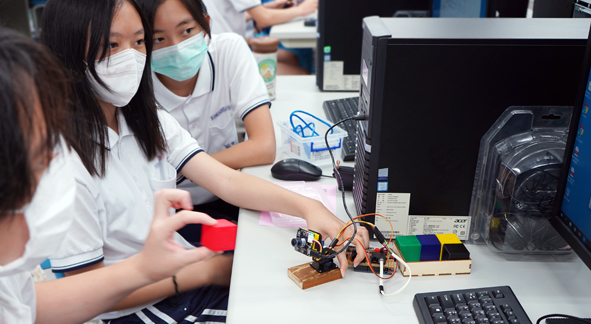Via platform teaches students AI and ML
- August 5, 2020
- Steve Rogerson

Taiwanese firm Via Technologies has launched the Pixetto vision sensor, an intuitive platform for teaching artificial intelligence (AI) and machine learning (ML) to students aged twelve and above.
Pixetto comes with integrated tools that make it easy for students to understand the basic principles and technologies underpinning AI and ML and apply them in their own AI vision, maker and robotics projects.
These tools include:
- Pre-built object, shape, colour, face and handwriting recognition models that students can use to configure the vision sensor;
- Beginner-friendly coding blocks integrated with the Scratch platform to teach students basic programming;
- Accelerated machine-learning platform for students to create new models for their projects; and
- Support for advanced coding using Python and TensorFlow Lite.
The Pixetto’s hardware features include a full HD vision sensor, Micro USB 2.0 port, Micro SD card slot, microphone and Grove connector for Arduino, Micro:bit and Raspberry Pi boards and peripherals.
“As artificial intelligence and machine learning proliferate across all aspects of our daily lives, it has never been more important for schools worldwide to equip their students with a theoretical and practical knowledge of these rapidly-emerging technologies,” said Richard Brown, Via vice president. “With the launch of Via Pixetto, our goal is to address this need by providing an intuitive and engaging platform for students to learn the basics of AI and ML and explore their potential applications by creating their own projects.”
Pixetto is available now in English and traditional Chinese versions. It can be ordered from the Via store at a price US$85 plus shipping per unit.
Via Technologies specialises in AI, IoT and computer vision technology for transportation, industrial, smart city and data centre applications. Headquartered in Taipei, its global network links the high-tech centres of the USA, Asia and Europe.





